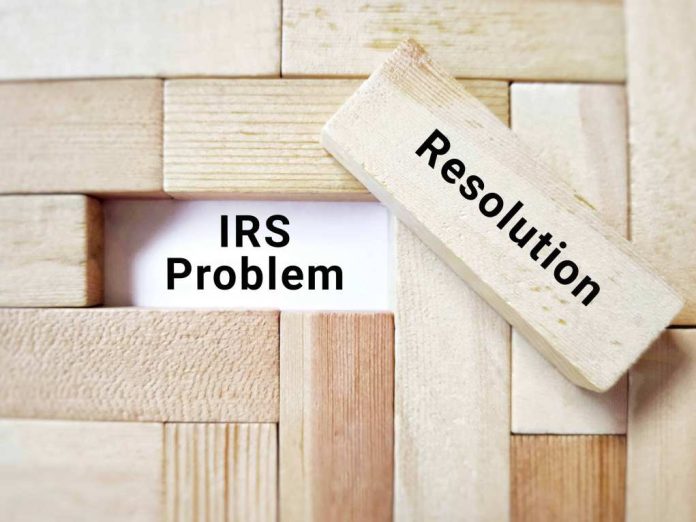
Many people could use a fresh start when it comes to their finances. In fact, the United States has roughly $527 billion in tax debt. Luckily, the Internal Revenue Service (IRS) understands that people struggle with debt. That is why they offer the Fresh Start Program. This program can help people dealing with debt get some relief. Let’s look into how this free program may be able to help!
What is the Fresh Start Program?
When people think of the Fresh Start Program they may think of one debt relief assistance opportunity. However, this is actually just an umbrella term that describes the variety of IRS debt relief opportunities. The goal of this program is to provide relief to taxpayers in handling their debt and any penalties while following the law. There are a variety of options available for individuals when managing their debt. That is why the best way to work on debt will vary based on the situation. Launched back in 2011, the IRS wanted to help taxpayers get in good standing by providing debt relief opportunities. This gives taxpayers the opportunity to handle their tax debt without facing penalties like:
- Liens
- Levies
- Wage Garnishments
- Jail Time
The best option for your situation will vary. That is why it is important to get in touch with a tax professional so that you can know for sure the best option for you. Opportunities under this program include:
- Currently Non Collectible (CNC)
- Installment Agreement (IA)
- Offer in Compromise (OIC)
- Penalty Abatement
Currently Non Collectible (CNC)
Sometimes people try to ignore the IRS as a way to solve their tax problems. However, that’s not the right answer. Instead, a CNC status may be the right choice instead. The CNC tax program stops the collection of your tax debt. This is a great option for people who owe a lot of money to the IRS that can’t manage their repayment.
Not everyone can be eligible for this opportunity. Only those that the IRS and State recognizes will qualify. The IRS/State will only recognize a taxpayer if their gross monthly income is less than their allowable expenses based on the national standards. Once you are at this limit, your financial records will prove that you are unable to pay what you owe without facing financial hardship. That is why there is a halt placed on the collection of your debt.
Benefits of the CNC Program
There are plenty of benefits that come along with this relief opportunity. However, the biggest benefit is the fact that taxpayers will be able to get support when it comes to their huge tax bill. They will not have to worry about the collection on this debt. Besides that benefit, another bonus to this program is that the IRS (or state taxing authority) will stop wage garnishment, bank levies, and even asset seizures.
Finally, a benefit of this program is that it’s possible to never be required to pay the debt you owe once you are a part of this program. That’s because when you are in CNC status, the statute of limitations on your debt will still continue to run. Known as the Collection Statute Expiration Date (CSED), your debt may be considered not collective if it reaches the 10-year statute on your back taxes!
What to Expect from the CNC Program
While this may be able to help, there are some important things to keep in mind when it comes to this assistance opportunity. One of the biggest things to consider is that this program only accepts a portion of the taxpayers that apply. That means the application process can be lengthy, involved, and in-depth.
Another factor to keep in mind is that while under this program it may be possible to not pay back the debt you owe but that may not be the case every time so you may still be responsible for some or all of the money you owe.
The IRS will be monitoring those that are in CNC status with periodic financial reviews. This helps them determine whether or not your financial situation is at the place when it can make full or partial payments. If you are not compliant with IRS requests for documentation you may not be able to continue benefiting from the program!
Installment Agreement (IA)
Sometimes people owe taxes at the end of the year that they may not be able to pay the amount they owe in full. If they can’t handle their payments then they may face penalties, fees, and even an arrest! That’s where an IRS IA comes into play. Oftentimes, the IRS and state taxing entities can provide taxpayers the option to pay back their debt in installments and payment plans. This gives taxpayers the chance to get more time for repaying their debt.
Eligibility Requirements for an Installment Agreement
Individuals that can’t pay back their tax debt may be able to benefit from this option if they:
- Are current with their filed tax returns
- Disclose their assets and cash
- Provide proof of the inability to pay off the amount you owe
- Prove you can’t borrow the amount you owe from a lender
Application Process for an IRS Installment Agreement
A good rule of thumb is to begin this process as soon as possible. That’s because if you owe money to the IRS then the quicker you move, the less likely the chance you will deal with penalties and other consequences that come from owing tax debt. If you want to begin the application process you can get help from a tax professional like an accountant.
Offer in Compromise (OIC)
The OIC program can provide relief to taxpayers that want to settle their delinquent taxes for less than they actually owe. If you want to reduce the amount you owe, this may be just the way to do it. It’s important to note that not everyone can benefit from this program. There is an application process to be mindful of! Even if you do qualify, the IRS accepts less than 50% of applicants every year.
What to Expect with the OIC Program
When filling out the application, it can help to have a tax professional. They can provide people the guidance and support they need when making sure their application has a higher chance of being accepted by the IRS. If you want to benefit from this program, you will only be accepted if you have been 100% compliant in all your previous tax returns. Generally, the IRS looks back 6 years.
Once you fill out your application you will need to submit it. After you submit your application, the IRS will take a look at your current financial situation in order to determine your ability to repay your tax debt. You may be required to provide additional information but you must be able to provide the documentation that they need.
What if the IRS Doesn’t Accept Your OIC Application?
Like we said earlier, typically less than 50% of applicants are accepted. If your application is rejected, you can submit an appeal. However, it is important to note that you only have 30 days to submit your appeal from the date on your rejection letter.
Penalty Abatement
The IRS is famous for their penalties. Taxpayers will receive penalties automatically through their computer system. Penalties can add up faster than you may realize and can make an already high tax debt even higher. If you are facing penalties from the IRS then you may benefit from penalty abatement. This can be a tricky concept, which is why it is important to get help from a tax professional (just like every other option on this list)! However, it’s especially important to have professional help because the penalty abatement application will involve IRS language, codes, and procedures that can be hard for taxpayers to understand.
Why is Reasonable Cause Important?
When addressing the penalties, you will need to show proof of reasonable cause that led you to not properly handling your tax debt. Some example of reasonable cause include:
- Natural Disaster
- Fire
- Disturbances
- Inability to Get Records
- Death of a member of a taxpayer’s immediate family
- Serious illness of the taxpayer
- Serious illness of a member of a taxpayer’s immediate family
Regardless of the reasonable cause that led to the mismanagement of tax debt, you will need to provide documentation. This documentation will act as proof!
IRS Fresh Start Program Eligibility Requirements and Application Process
Now that you know the different relief options under the IRS Fresh Start Program, it is important that you understand your qualifications. Each opportunity caters to a different group of people. Which means you will likely be able to find one that can help your situation. That is why you will want to get in touch with a tax professional so that you can better understand the best option for you.
However, one of the biggest hiccups that people face is getting help from these programs while dealing with their current tax return. That’s because the IRS needs taxpayers to be up to date on all tax returns in order to benefit from the IRS Fresh Start program. Besides being up-to-date, taxpayers must also have the right amount of withholdings for the current year. The IRS has these requirements in order to build trust with the taxpayers so that they can be held accountable. Some basic qualifications of this program includes:
- Single filers can’t earn over $100,000 every year
- Joint filers can’t earn over $200,000 every year
- Self-employed people must provide proof of a 25% drop in net income
- An individual’s tax balance must be less than $50,000 before the end of the year
If you want to apply for this program then you will need to get the right eligibility form. Each relief option under the Fresh Start program will have their own set of forms. When filling out forms you want to make sure they are honest and in-depth. You can also benefit from having a tax professional help you with the application process!
Bottom Line
If you are one of the taxpayers that is dealing with tax debt, then you may be able to benefit from the Fresh Start Program. There are a variety of different relief opportunities through this program like:
- Currently Non Collectible (CNC)
- Installment Agreement (IA)
- Offer in Compromise (OIC)
- Penalty Abatement
If you want to find the best relief option for your situation you will want to get in touch with a tax professional. These professionals can provide you guidance on finding the best relief option for what you’re dealing with and help you handle the application process. A good rule of thumb is to begin the process as soon as you can! This can help you avoid consequences when dealing with your tax situation.




























